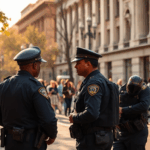Table of Contents
The world of drug trafficking is anything but static; it’s a dynamic battlefield where key players rise and fall, continually reshaping the operations of powerful cartels. Recently, Ismael “El Mayo” Zambada, a significant leader of the Sinaloa cartel, pleaded guilty to federal charges in the United States.
This pivotal moment not only sheds light on the inner workings of this notorious organization but also underscores the ongoing struggle against drug trafficking. Have you ever wondered just how complicated the web of relationships and strategies is that cartels weave to keep their grip on the illicit drug trade?
The Sinaloa Cartel’s Operations
For decades, the Sinaloa cartel has been at the center of drug trafficking in North America, focusing primarily on cocaine, heroin, and fentanyl. Zambada, who co-founded the cartel with the infamous Joaquin “El Chapo” Guzman, played a crucial role in developing an extensive network.
His recent guilty plea in a Brooklyn federal court has unveiled the vast scale of their operations, which included forging alliances with Colombian cocaine producers and crafting intricate smuggling routes into the United States. Can you imagine the elaborate planning required to pull off such large-scale trafficking?
Zambada revealed that the cartel’s tactics relied heavily on bribery and corruption.
Operatives would pay off Mexican police and military officials to keep their operations running smoothly, a strategy that has long been a hallmark of the cartel’s playbook. This systemic corruption allowed them to deftly navigate the complexities of law enforcement while maintaining their dominance in the drug trade.
Isn’t it alarming how deeply entrenched these practices are?
Legal Consequences and Industry Impact
Zambada’s plea agreement included a crucial assurance from the U.S. Justice Department that the death penalty would not be pursued, a significant factor influencing his decision to plead guilty.
His acceptance of responsibility for the cartel’s actions may signal a shift in the dynamics of drug enforcement in both the U.S. and Mexico. With Zambada acknowledging the immense harm caused by illegal drugs, could we see a renewed focus on tackling the root causes of drug trafficking and its effects on society?
Moreover, Zambada’s plea has broader implications beyond his individual accountability. The U.S. has ramped up efforts to dismantle powerful drug organizations, as seen in the recent extraditions of cartel members and increased collaboration with Mexican authorities. The pressure from U.S. officials, including demands for Mexico to take stronger actions against drug cartels, suggests a significant change in the operational landscape. What do you think this means for the future of drug enforcement?
The Future of Drug Cartels in a Changing Environment
As drug trafficking evolves, the Sinaloa cartel—and others like it—faces mounting challenges. The arrest of key figures and relentless law enforcement pressure could lead to fragmentation within these organizations, possibly resulting in more violence and instability in the drug trade. Yet history shows that the resilience of such cartels often paves the way for new leaders and strategies to emerge. Are we ready for the next chapter in this ongoing saga?
Looking forward, the focus on dismantling drug trafficking organizations may prompt a reevaluation of law enforcement strategies. Emphasizing prevention and community engagement could help address the underlying issues of addiction and trafficking. Zambada’s case marks a critical point in this ongoing struggle, offering valuable insights into the operations of one of the most powerful drug cartels in history. How can we leverage this knowledge to create effective solutions?





